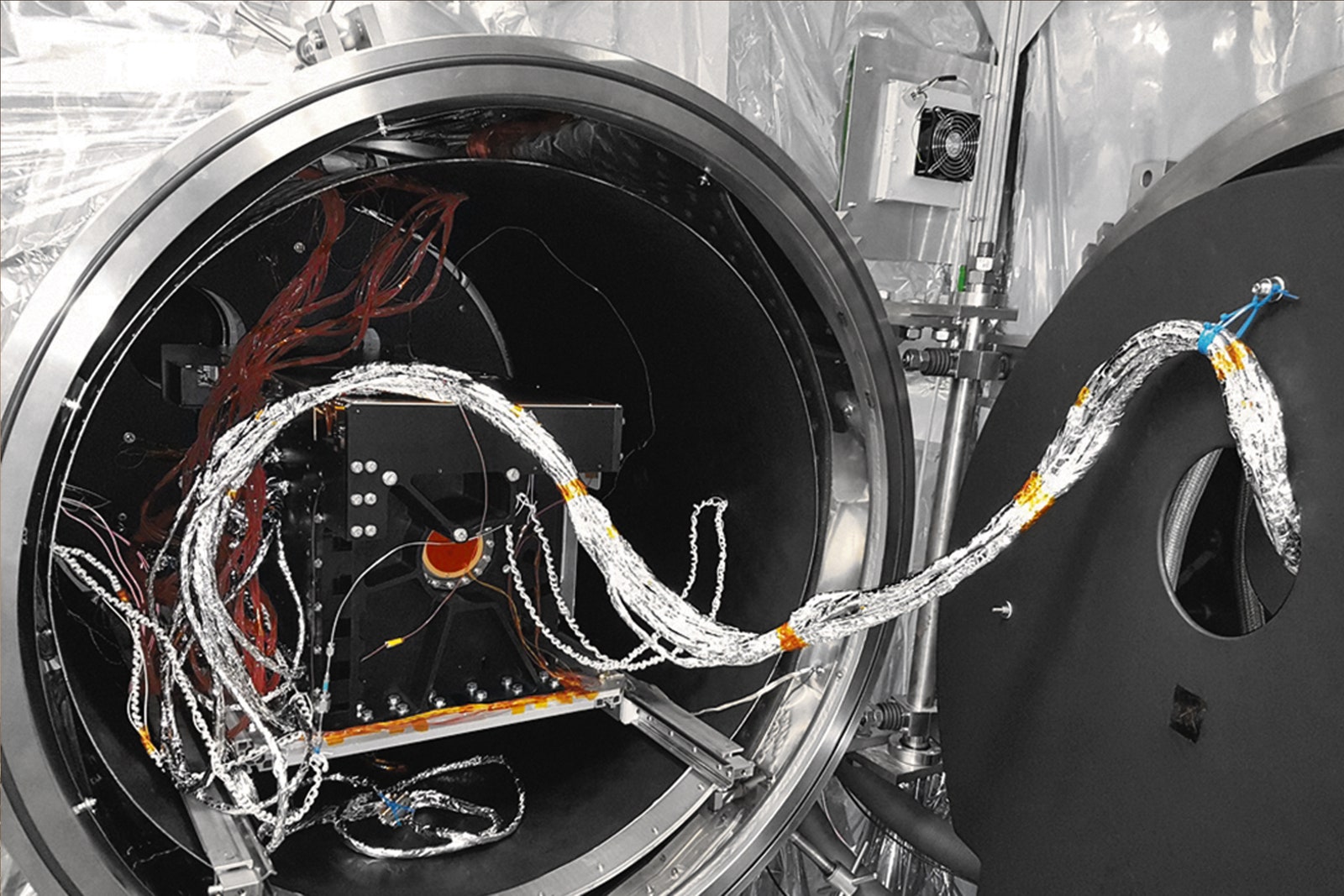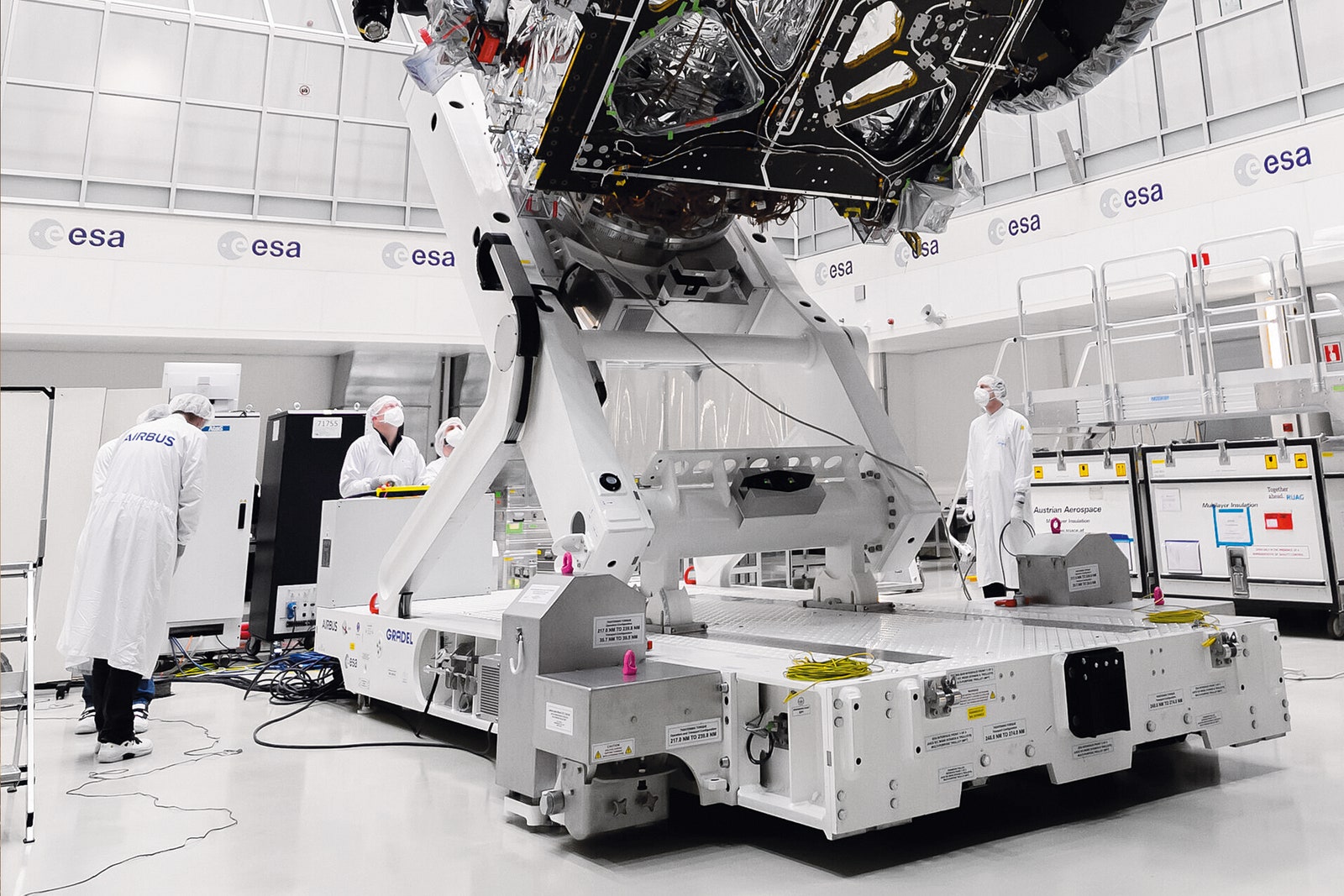NASA, the European Space Agency, and other agencies were forced to reschedule many of their missions while Covid-19 caused technical delays. In 2022, the rush to get space research back on track will see a rover heading to the Red Planet, a satellite sent to study Jupiter and its moons, and a telescope launched into space to hunt for evidence of dark matter and dark energy. Meanwhile, back on Earth, four human volunteers will spend 12 months living in a simulation of Mars.
Illustration: ICON
Mars Dune Alpha
A 3D-printed habitat in which life on Mars will be simulated will sprout from the Texan desert in 2022. Developed by architects Bjarke Ingels Group and advanced construction technology specialists ICON in collaboration with NASA, it is intended as “preparation for humans to live on Mars.” Four crew members will live and work in the 158-square-meter station, facing a series of challenges like equipment failure and environmental issues. The data gathered will inform NASA’s planning for the real thing.
Photograph: ESA/TAS-I
ExoMars Mission
The 2022 mission of the ExoMars program (delayed from 2020) will send UK-assembled rover Rosalind Franklin and the Kazachok Russian surface platform to the Red Planet. The European Space Agency (ESA) will use a Proton rocket to launch the lander and rover in late September 2022, arriving at Mars in June 2023, after a nine-month journey. The ExoMars rover will probe the Martian surface in search of evidence of past life, collecting subsurface samples with a drill and depositing them in its Analytical Laboratory Drawer. Then, its “Pasteur” suite of instruments will analyze the soil for biosignatures. ExoMars will be the first Martian mission to combine the ability to move across the surface with studies of deep subsurface soil.
Photograph: ESA/SJM
JUICE
Shown here is the Jupiter Icy Moons Explorer (JUICE), which will launch in 2022 as part of the ESA’s Cosmic Vision program. Its mission is to study three of Jupiter’s moons—Ganymede, Callisto, and Europa—to better understand whether they are potential habitats for life. These three moons are thought to have liquid water on them, but we won’t know until JUICE enters Jupiter’s orbit in 2031. In 2032 it will become the first spacecraft to orbit a moon other than the Earth’s when it enters the orbit of Ganymede.
Photograph: ESA
Euclid
The Euclid infrared space telescope will help scientists gain a deeper knowledge of dark matter and dark energy by accurately measuring the shapes of galaxies at various distances from Earth. In doing so, it will help us understand why the expansion of the universe appears to be accelerating and what may be causing it. Launching from the Guiana Space Centre in
a Soyuz ST-B rocket in the second half of 2022, Euclid will settle into orbit at the L2 Lagrange Point, 1.5 million kilometers from Earth.
Get more expert predictions for the year ahead. The WIRED World in 2022 features intelligence and need-to-know insights sourced from the smartest minds in the WIRED network. Available now on newsstands, as a digital download, or you can order your copy online.
More Great WIRED Stories






